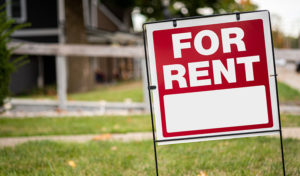Landlords cycle through tenants — that’s just how it goes. But, with every transition, there are some expenses involved. How much does tenant turnover cost?
In this article:
Tenant Turnover Cost: Everything That Goes Into It
Tenant turnover is the period of time between the end of an old tenant’s lease term and the start of a new tenant’s lease term. There are many associated expenses that landlords encounter during this gap. These expenses can vary depending on a few factors, including the condition of the property, the age of the property, and the demand for rental properties in the area. Though, the average cost of tenant turnover is around $1,750 per month.
Here are all of the costs that come with tenant turnovers.
1. Administration
The turnover process involves a lot of administrative work. And with that comes administrative costs. These include fees associated with processing paperwork, hiring vendors for cleaning and repairs, bank fees, and tenant screenings. For landlords that employ property management companies, this also includes the property management fee.
2. Cleaning
 Cleaning is essential if you want to attract tenants. Showing prospects around a dirty place sends them a signal that the landlord doesn’t care enough to keep the property clean. It also encourages tenants to look after the property with the same level of care.
Cleaning is essential if you want to attract tenants. Showing prospects around a dirty place sends them a signal that the landlord doesn’t care enough to keep the property clean. It also encourages tenants to look after the property with the same level of care.
While cleaning is something you can do yourself, it’s best left in the hands of professionals. This is especially true if you manage multiple properties. Have the carpet washed, debris thrown out, the exterior pressure washed, and the lawn mowed. Make sure not to miss any corners and crevices.
3. Repairs
Nobody wants to live in a decrepit apartment or house. As such, you should inspect the rental home for any signs of damage and have them repaired before putting it back on the market. This is also the perfect time to do some upgrades if time and budget permit.
Don’t forget to conduct a move-out inspection with your old tenant. This way, if they left your property worse for wear, you can use their security deposit to cover some of the repairs. Of course, ideally, you would have no need for repairs at all. Repairs, particularly major ones, can extend the amount of time your property is left unoccupied, driving your lost income expense higher.
4. Advertising
Another essential tenant turnover cost is advertising. Unless you already have a new tenant lined up to take over, you will need to market your rental to potential tenants. Keep in mind that there are some platforms that allow you to post rental ads for free. However, many others do charge a small fee. Apart from the online route, other advertising options include flyers, newspaper ads, and printed signs.
 5. Property Showings
5. Property Showings
It is normal for prospects to want to see the property in person before making a decision. Sometimes, you will only need to show it once or twice. Other times, though, you can rack up a pretty high number of showings. Whatever the case, showings do take time. And, if you don’t live nearby, they also come with travel costs.
6. Tenant Screening
It is important to screen your tenants before you sign the lease. In addition to a filled-out application form, you will also need to review various reports. These include credit reports, criminal background reports, and eviction reports. This way, you can confirm that the prospective tenant has a good rental history and can cover rent.
All of these reports, though, cost money. And, if you don’t charge an application fee, you will have to pay for them out of pocket. As such, it is advisable to collect an application fee so you can keep turnover costs low.
 7. Vacancy
7. Vacancy
Vacant units don’t earn rental income. And the longer a unit remains vacant, the higher your lost income expense will be. This cost is particularly heavy on landlords who are still paying a mortgage and are using their rental income to cover it.
Vacancy rates can vary depending on your location, the time of year, and the property itself. Nice properties located in major cities or areas are more likely to get tenanted sooner. Wintertime is also pretty dead in terms of demand. Fortunately, there are some things you can do to boost your chances of finding a quality tenant.
8. Court Costs (Sometimes)
This is a tenant turnover cost that landlords often overlook. It’s not something you want to think about, but evictions do happen. Sometimes, they are even necessary. If you need to evict a tenant, there are certain legal fees and court costs that you will incur. Disgruntled tenants may also intentionally damage your property in retaliation, leading to higher repair costs.
The Tenant Turnover Process
In normal circumstances, the turnover process usually begins 1 to 2 months prior to the end of the lease term. At this point, landlords will send a notice to the tenant letting them know of the contract’s impending expiry. The tenant generally has two options: renew the lease or move out. If the tenant wants to move out, most lease agreements require them to provide a certain length of notice.
Once you receive their move-out notice, start looking for tenants immediately. Advertise your property online or using traditional methods. Then comes the move-out inspection. Make sure to thoroughly examine every inch of the property to identify if there are any damages the tenant left behind. The security deposit may cover the cost of repairs.
After your old tenant has moved out, hire someone to clean the property. This is also when you would need to do any maintenance or repair work (if necessary). After that, you will need to do property showings, process applications, and screen tenants. The end goal is to find a quality tenant and have them sign a lease with you.
Causes of Tenant Turnover
A high tenant turnover rate can be alarming, so much so that it can prompt you to change a lot of things about your property. But, before you drastically lower rent or completely redo your perfectly fine flooring, take a pause. There are some reasons for tenant turnover that are simply out of your control.
These include the following:
 Expiry. Tenants move all the time. This can be due to a number of reasons, such as a new job or to be closer to family. As such, once their lease expires, they will simply choose not to renew.
Expiry. Tenants move all the time. This can be due to a number of reasons, such as a new job or to be closer to family. As such, once their lease expires, they will simply choose not to renew.- Early Termination. A tenant may want to move out and end the lease early. When this happens, you will need to begin the turnover process.
- Eviction. This usually happens when a tenant violates a major term in your agreement. For instance, a tenant might begin taking part in illegal acts, sublet the apartment without consent, or stop paying rent.
How to Minimize Tenant Turnover
Because turnovers can be expensive, landlords actively seek ways to reduce their turnover rate. This, in turn, will keep the tenant turnover cost low. Obviously, the best way to minimize turnover is to enhance tenant retention. If you keep the same tenant for a long time, you can avoid incurring the costs associated with turnover.
One of the best ways to do this is to maintain a great relationship with your tenant. Communication goes a long way. When a tenant has a concern, make sure to listen. Acknowledge them and then try your best to address their concern.
Tenants are also far less likely to move if you keep rent at a fair price. Rent increases are normal, but you shouldn’t raise rent an exorbitant amount. Keep it at a fair market value.
Finally, make sure to keep your property well-maintained. A property that looks great and functions well can make a huge impact on fostering a positive landlord-tenant relationship.
More Than a Budget Issue
The tenant turnover cost is something that every landlord worries about whenever a renter moves out. Thankfully, you can keep costs fairly low by getting ahead of maintenance and repairs, attracting quality tenants, and charging an application fee. Some landlords, of course, are more troubled by the amount of work involved in the turnover process. This is where a property management company can help.
Look for a property management company you can trust. Start with our comprehensive online directory to find one near you!
RELATED ARTICLES:
- A Guide For Landlords On How To Make A Rental Contract
- The Ins And Outs Of Rental Property Maintenance and Repairs
- Property Manager Job Description: What Does A Property Manager Do?




 Company
Company